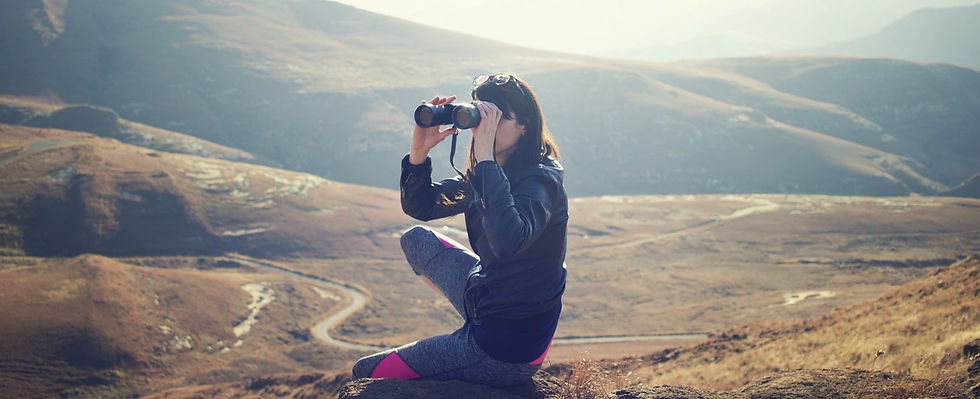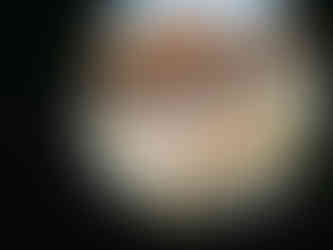Beginners Tips for Using Binoculars
- Sophia

- Mar 4, 2020
- 4 min read

I use binoculars everyday; they’re the most valuable tool for me when observing nature, especially when birdwatching. After a few years of using them I’ve noticed and learned a few things about them that have helped me use them for affectively, and I thought I’d share a few of them here. I hope these tips will be helpful for other beginning binocular users.
Binoculars are for viewing a subject, not finding one. I was on a field trip with a class when I first heard this tip. Even though it was pretty simple, I thought it was really spot-on. When you go out to use your binoculars, it can be really helpful to look at the entire landscape for a few minutes to get an idea of your surroundings. If you see something you want to get a closer look at, lock your eyes on it and bring your binoculars up to your face. That way, you won’t have to move your head all around to try and find that tiny bird in your binoculars. Of course, this is a guideline and not a rule; at times, I have found it really helpful to view or scan a distant area, like a field, through my binoculars to find wildlife or other subjects of interest.
Explore the different options. Binoculars come in many shapes and sizes, so trying to explore some different options can help you find what you like best. Something important to think about is weight. My first pair of binoculars were fairly heavy, so my arms and hands became tired while birdwatching. The new pair I have is much smaller and lighter, so overall it's more convenient. I would also consider how easily the pair attaches to tripods and other mounts (we'll see why in one of the next tips). It's up to you to choose which option works best for your interests and goals.
Take advantage of all the adjustments. Binoculars have adjustable parts and pieces, and they can all be used to make your binoculars more personalized and easier for you to use. You can make the neck strap longer or shorter, tilt both of the eyepieces to be either closer together or farther apart to match up with your eyes, and of course turn the focus knob to make the image clear. Something that might be less obvious is that, in my experience, some distance is needed

between your eyes and the eyepiece to make the image bigger and easier to view. I wear glasses, so that distance is already provided for me, but for those who don’t wear glasses, the adjustable eyecups will be helpful. These pieces surround the eyepiece and can be twisted to go up or down. Other binocular models or brands might have more adjustments than what I have listed, but I have found these to be very helpful.
No long-lens camera? No problem! Even without a long-lens camera, I’ve captured some pretty cool photos of birds and other wildlife. I love to use my binoculars as a camera-assist, and all I have to do is put my smartphone camera up to one of the eyepieces of my binoculars and snap a photo! The eyecups mentioned in the previous tip are especially helpful here. Without the proper distance from the lens, the picture will be small or blurry, so by using the adjustable eyecups to distance the camera from the lens, the camera will be more stable and the picture will be larger. Here’s a few photos that I’ve captured using this method:
(IDs in order from top left to bottom right: Great Egret, Red-breasted Nuthatch, Bison, Turkey Vulture)
Use a tripod to stabilize your binoculars. A tripod is definitely not a necessity when it comes to using binoculars, but it does come in handy every now and again. Many binoculars have an area on the joint where you can screw the binoculars onto a tripod mount. I utilized this feature a lot in January when I spent a month moon watching, because it was much easier to get a clear view of the moon and all its details when I wasn’t holding my binoculars with my arms and dealing with their unavoidable movements. This is especially helpful when you are trying to write about or sketch what you are viewing. Instead of having to switch between holding pencils and binoculars, you can set up the tripod and occasionally glance up to view your subject while sketching or writing. I’ve also seen many people using scopes in this way, but I don’t own one and have found my binoculars to work well as a substitute.
Keep your binoculars where you can access them. I constantly find myself wanting to use my binoculars, so I try to bring them with me everywhere, even if that means to a different room in the house. They’ve sort of become a second pair of eyes to me. Keeping them in easy access means you will use them more often and become more comfortable with them.
I hope that these tips are helpful to any new binocular users out there. Just like with any new tool, however, they take some getting used to. Have fun exploring the world with this awesome tool!












Comments